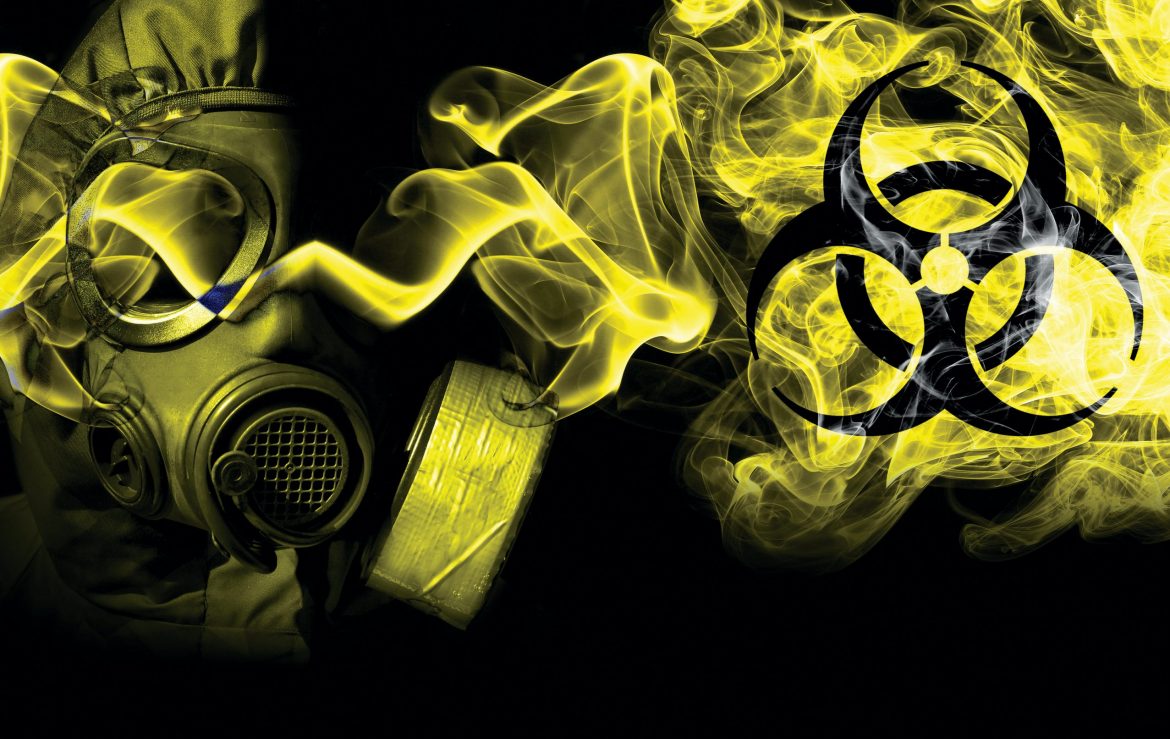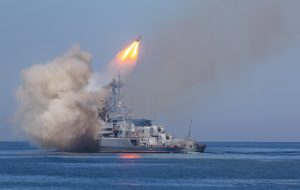Biological weapons, also called germ weapons, are any of a number of disease-producing agents — such as bacteria, viruses, rickettsia, fungi, toxins, or other biological agents—that may be utilized as weapons against humans, animals, or plants. The direct use of infectious agents and poisons against enemy personnel is an ancient practice in warfare. Indeed, in many conflicts, diseases have been responsible for more deaths than all the employed combat arms combined, even when they have not consciously been used as weapons.

1. Mass Deaths
Biological weapons, like chemical weapons, radiological weapons, and nuclear weapons, are commonly referred to as weapons of mass destruction, although the term is not truly appropriate in the case of biological armaments. Lethal biological weapons may be capable of causing mass deaths, but they are incapable of mass destruction of infrastructure, buildings, or equipment. Nevertheless, because of the indiscriminate nature of these weapons—as well as the potential for starting widespread pandemics, the difficulty of controlling disease effects, and the fear that they inspire—most countries have agreed to ban the entire class.
2. Biological Warfare in History
One of the first recorded uses of biological warfare occurred in 1347, when Mongol forces are reported to have catapulted plague-infested bodies over the walls into the Black Sea port of Caffa (now Feodosiya, Ukraine), at that time a Genoese trade center in the Crimean Peninsula. Some historians believe that ships from the besieged city returned to Italy with the plague, starting the Black Death pandemic that swept through Europe over the next four years and killed some 25 million people (about one-third of the population).
In 1710, a Russian army fighting Swedish forces barricaded in Reval (now Tallinn, Estonia) also hurled plague-infested corpses over the city’s walls. In 1763, British troops besieged at Fort Pitt (now Pittsburgh) during Pontiac’s Rebellion passed blankets infected with smallpox virus to the Indians, causing a devastating epidemic among their ranks.
3. Most Dangerous Bio-weapons
Bioweapons such as Anthrax, Botulism and Variola have been studied as weapons, engineered and in some cases even deployed to devastating effect. Army Technology magazine published a list of the world’s deadliest bio-weapons as follows:
1 Anthrax: Bacillus anthracis bacteria, which causes anthrax, is one of the deadliest agents to be used as a biological weapon. It is classified by the US Centers for Disease Control and Prevention (CDC) as a ‘Category A’ agent, posing a significant risk to national security. The gram-positive, rod-shaped anthrax spores are found naturally in soil, can be produced in a lab, and last for a long time in the environment. Anthrax has been used as a bio-weapon for about a century. The invisible, infectious, odorless and tasteless spores make Anthrax a flexible bio-weapon.
2 Botulinum Toxin: Botulinum is relatively easy to produce and has extreme potency and lethality. A gram of Botulinum toxin can kill more than a million people if inhaled. Botulism is a serious muscle-paralyzing disease caused by a nerve toxin produced by a bacterium called Clostridium botulinum. It induces illness through a common pathway causing muscle weakness, difficulty in speaking and swallowing, and double and blurred vision.
3 Smallpox: Variola major virus causes Smallpox, a highly contagious and infectious disease that has no cure and can be only prevented by vaccination. Smallpox is believed to have been used as a biological weapon against Native Americans and again during the American Revolutionary War. The threat of smallpox being used as a biological weapon decreased when WHO launched a successful global immunization program against Smallpox in 1967.
4 Tularemia: Extreme infectiousness, ease of dispersion, and ability to cause illness and death make Francisella tularensis bacterium, classified as Category A, is a dangerous bio-weapon. People affected with Francisella tularensis experience symptoms including skin ulcer, fever, cough, vomiting and diarrhea.
5 Ebola Virus: Ebola Virus Disease (EVD) is a deadly disease induced by infection with one of the Ebola virus forms. Ebola was first discovered in 1976 in the Democratic Republic of the Congo and is transmitted to humans from wild animals, causing an average case fatality rate of 50%. Ebola as a biological weapon poses a great threat to humans because of its high case-fatality rate.
6 Plague: Yersinia pestis bacterium, also classified as Category A organism causing pneumonic plague, can be created in a laboratory in high quantity for use as a bio-weapon. Pneumonic plague spreads from person to person and causes symptoms such as fever, weakness and pneumonia in early stage and, if not treated early, leads to respiratory failure, shock and death.
7 Marburg Virus: Marburg Haemorrhagic Fever (Marburg HF) is caused by Marburg virus of the filovirus family, which also includes the Ebola virus. Marburg virus, also a ‘Category A’ bio-warfare agent,is hosted in African fruit bat. It has a high case fatality rate of up to 90%.
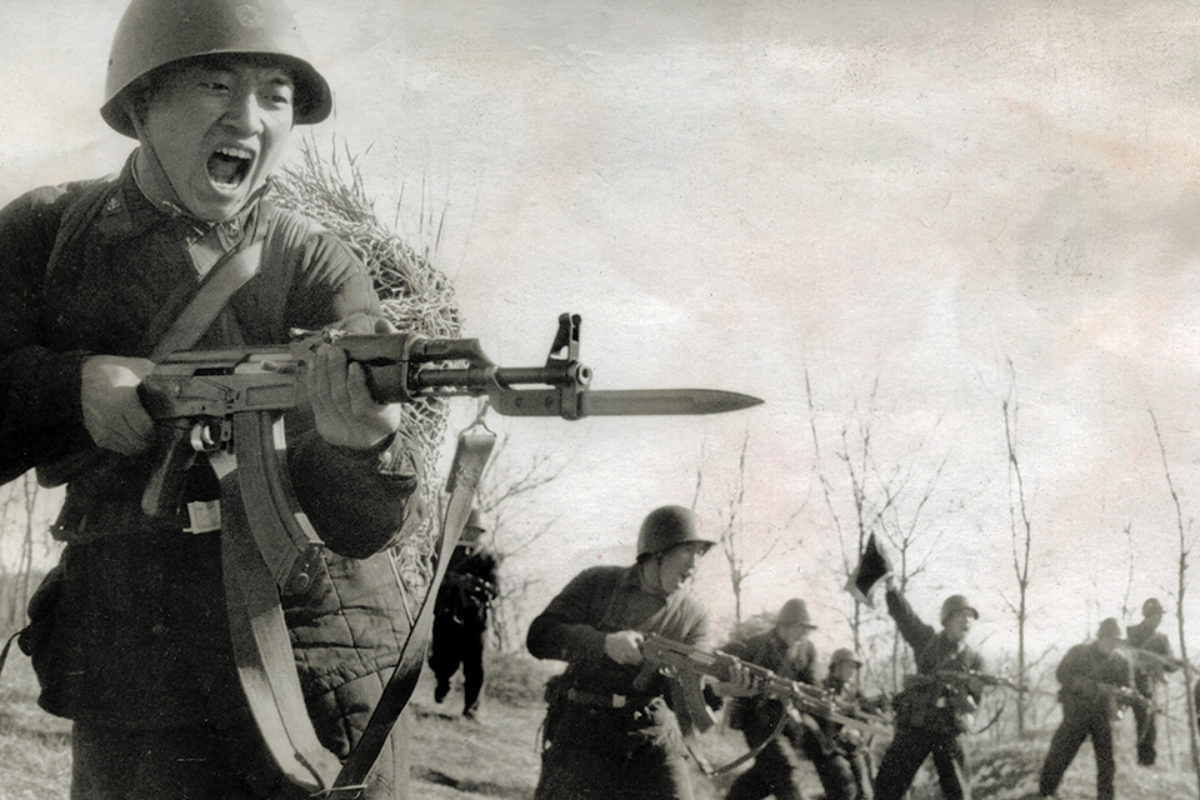
8 Bunyavirus: The Bunyaviridae family of viruses includes three viruses – Nairovirus, Phlebovirus and Hantavirus. Korean hemorrhagic fever caused by Hantavirus broke out during the Korean War when an estimated 3,000 American and Korean soldiers became infected with the disease, but evidence of its direct usage as a biological weapon has not been found. Bunyavirus causes human infections such as Hanta Pulmonary Syndrome (HPS), Rift Valley fever and Crimean-Congo hemorrhagic fever. It is transmitted by arthropods and rodents and occasionally infects humans too. The Hanta virus causing HPS causes a mortality rate of up to 50%.
4. Heat & Oxidation
Bio-weapons can be delivered in numerous ways: direct absorption or injection into the skin, inhalation of aerosol sprays or consumption of food and water. The most vulnerable — and often most lethal — point of entry is the lungs. Fortunately, most biological agents break down quickly in the environment through exposure to heat, oxidation, and pollution, coupled with the roughly 50 percent loss of the microorganism during aerosol dissemination or 90 percent loss during explosive dissemination.
5. Genetic Engineering Defenses
The revolution in genetic engineering provides a path for overcoming delivery issues and escalating a biological attack into a pandemic. First, tools for analyzing and altering a microorganism’s DNA or RNA are available and affordable worldwide. The introduction of clustered regularly interspersed short palindromic repeats (CRISPR) — a technique that acts like scissors or a pencil to alter DNA sequences and gene functions — in 2013 made biodefense more challenging. Even as experienced researchers struggle to CRISPR and prevent unintended effects, malevolent actors with newfound access can attempt to manipulate existing agents to increase contagiousness; improve resistance to antibiotics, vaccines, and anti-virals; enhance survivability in the environment; and develop means of mass production.
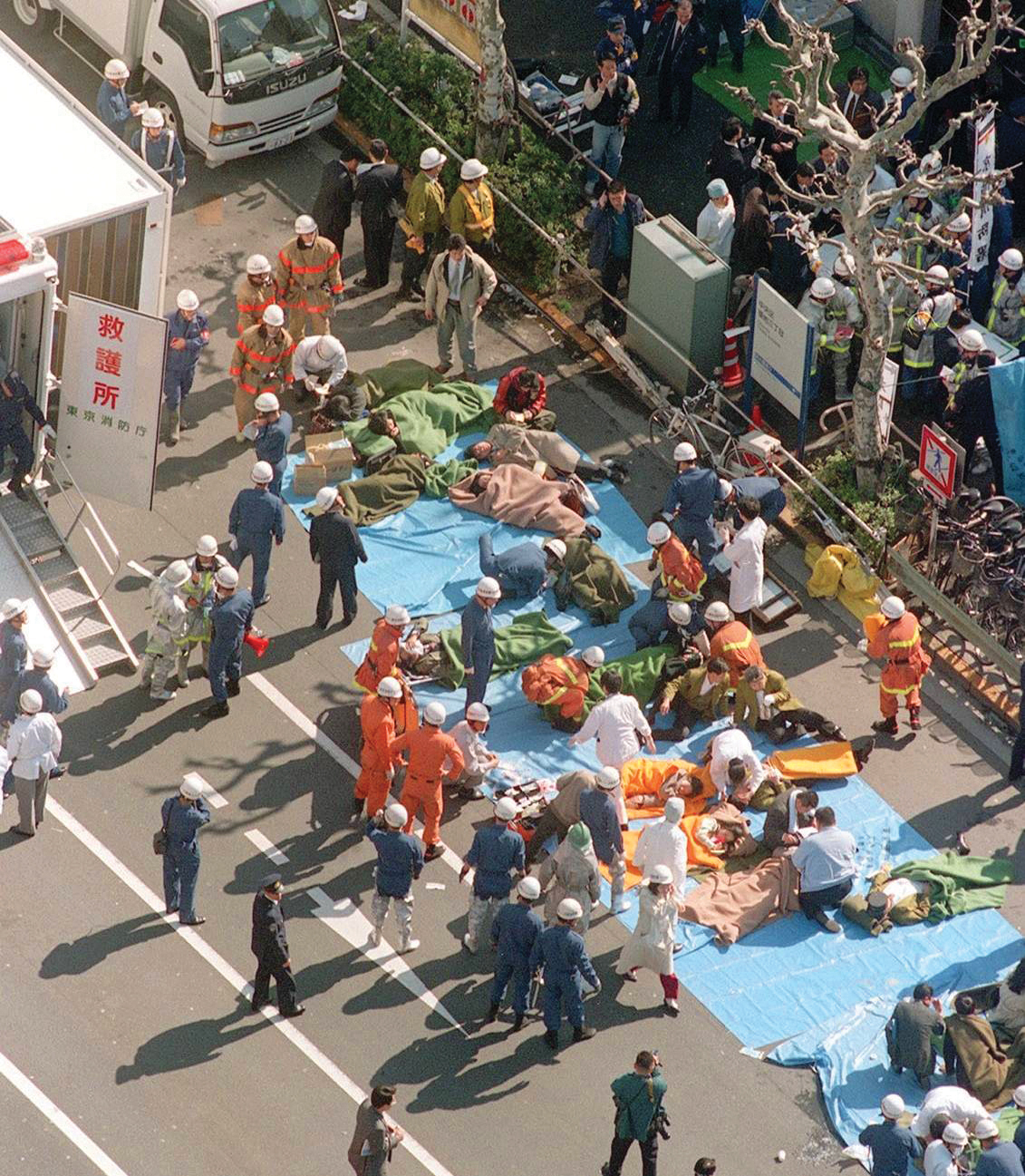
6. Bio Terrorism
Biological weapons are “unfortunately characterized by low visibility, high potency, substantial accessibility, and relatively easy delivery”. This can make them very tempting choices for not only states but terrorist groups. However, neither the international community nor any individual country is well prepared for bioterrorism. Among famous bioterrorist attacks that were launched in the past decades:
1 Exiled Indian Guru: In the 1980s, followers of the exiled Indian self-proclaimed guru Bhagwan Shree Rajneesh settled on a ranch in Wasco county, Oregon, U.S. The “Rajneeshies” took political control of the nearby town of Antelope, changing its name to Rajneesh, and in 1984 they attempted to extend their political control throughout the county by suppressing voter turnout in the more populous town of The Dalles. Their attacks made at least 751 people ill. The plot was not discovered until the year after the attack, when one of the participants confessed.
2 Japanese Sect: In the period from April 1990 to July 1995, the AUM Shinrikyo sect used both biological and chemical weapons on targets in Japan. The members’ biological attacks were largely unsuccessful because they never mastered the science and technology of biological warfare. Nevertheless, they attempted four attacks using anthrax and six using botulinum toxin on various targets, including a U.S. naval base at Yokosuka.
3 Al Qaeda: Al-Qaeda operatives have shown an interest in developing and using biological weapons, and they operated an anthrax laboratory in Afghanistan prior to its being overrun by U.S. and Afghan Northern Alliance forces in 2001–02. In 2001, anthrax attacks killed 5 people and sent 22 to the hospital while forcing the evacuation of congressional office buildings, the offices of the governor of New York, headquarters of several television networks, and a tabloid newspaper office. This event caused many billions of dollars in cleanup, decontamination, and investigation costs. In early 2010, more than eight years after the attacks, the Federal Bureau of Investigation finally closed its investigation, having concluded that the crimes were committed by a microbiologist, who had worked in the U.S. Army’s biological defense effort for years, and who committed suicide in 2008 after being named a suspect in the investigation.
7. Online Hazards
Information on the manufacturing of biological and chemical weapons has been disseminated widely on the  internet, and basic scientific information is also within the reach of many researchers at biological laboratories around the world. Unfortunately, it thus seems likely that poisons and disease agents will be used as terrorist weapons in the future, unless a serious action is taken by governments collectively and individually to ban such activities.
internet, and basic scientific information is also within the reach of many researchers at biological laboratories around the world. Unfortunately, it thus seems likely that poisons and disease agents will be used as terrorist weapons in the future, unless a serious action is taken by governments collectively and individually to ban such activities.
8. Biological Weapons Convention
The Biological Weapons Convention (BWC) effectively prohibits the development, production, acquisition, transfer, stockpiling and use of biological and toxin weapons. It was the first multilateral disarmament treaty banning an entire category of weapons of mass destruction (WMD). The BWC is a key element in the international community’s efforts to address WMD proliferation and it has established a strong norm against biological weapons. The Convention has reached almost universal membership with 183 States Parties and four Signatory States. Formally known as “The Convention on the Prohibition of the Development, Production and Stockpiling of Bacteriological (Biological) and Toxin Weapons and on their Destruction”, the Convention was negotiated by the Conference of the Committee on Disarmament in Geneva, Switzerland. It opened for signature on 10 April 1972 and entered into force on 26 March 1975. The BWC supplements the 1925 Geneva Protocol, which had prohibited only the use of biological weapons.
States Parties to the Biological Weapons Convention undertook زnever in any circumstances to develop, produce, stockpile or otherwise acquire or retain:
- microbial or other biological agents, or toxins whatever their origin or method of production, of types and in quantities that have no justification for prophylactic, protective or other peaceful purposes;
- weapons, equipment or means of delivery designed to use such agents or toxins for hostile purposes or in armed conflict.”
BWC States Parties have strived to ensure that the Convention remains relevant and effective, despite the changes in science and technology, politics and security since it entered into force. Throughout the intervening years, States Parties have met approximately every five years to review the operation of the BWC. Between these Review Conferences, States Parties have pursued various activities and initiatives to strengthen the effectiveness and improve the implementation of the Convention. A total of eight Review Conferences have taken place since the first one in 1980. The Ninth Review Conference is due to take place in November 2021.
9. Six Ways Science Can Improve Biodefense
1 Understanding the human genome: Human genome projects will have a profound influence on the pace of molecular biology research and help solve the most mysterious and complex of life’s processes. New biotechnology should allow the analysis of the full cascade of events that occur in a human cell following the infection with a pathogen or the uptake of toxin molecule. Circumstances that caused individual susceptibility to infectious diseases will become clear.
Currently, the functions of nearly half of all human genes are unknown. Functional genomics studies should elucidate these unknowns and enable design of possible new strategies for prevention and treatment in the form of vaccines and anti-microbial drugs.
2 Boosting the immune system: The complete sequencing of the human genome also provides a new starting point for better understanding of, and potential manipulation of, the human immune system. This has a tremendous potential against biological warfare. After years of effort in the FSU to genetically engineer pathogens for biological warfare. Researchers are working to protect against the use of biological agents. They are researching mechanisms to boost the immune system to defend the body against infectious diseases. One of the initial projects, in this domain, is conducting cellular research that could lead to protection against anthrax. Similar immunological research in other labs has great promise to heighten the general human immune response to microbial attack in an effort to move beyond the “one bug-one drug” historical approach.
3 Understanding viral and bacterial genomes: The genome projects for various microorganisms will explain why pathogens have the characteristics of virulence or drug resistance. Creating a minimal genome would be an important milestone in genetic engineering as it would prove the capability to create organisms simply from the blueprint of their genomes. Such a kind of research may provide insight into the very origins of life, bacterial evolution, and understanding the cellular processes of more complex life forms. Bacteria may also be modified to produce bioregulators against pathogens. For example, E. coli has been genetically engineered to produce commercial quantities of interferon, a natural protein that has antiviral activity against a variety of viruses.
4 Bio-agent detection and identification equipment: Biotechnologists need to continually develop more definitive, rapid, and automated detection equipment, regardless of whether or not bacteria have been genetically engineered.
The capability to compare genomes using DNA assays is already possible. It is reasonable to contemplate a DNA microchip that could identify the most important human pathogens by deciphering bacterial and viral genomes. This detector could provide information on the full genetic complement of any Biological Weapon (BW) agent even if it contained genes or plasmids from other species, had unusual virulence or antibiotic-resistance properties, or was a synthetic organism built from component genes. The ability to quickly identify and characterize a potential BW agent with a single test will greatly reduce the delays in current detection methods. Genetics deciphered the genome of the anthrax bacteria contained in the terrorist letters after September 11, 2001. DNA tests confirmed that the anthrax in every letter was the Ames strain. Forensic scientists also looked for human DNA that might be inside the letters. The information was used for both the criminal investigation and for further medical research for diagnosis and treatment. Further research and development can be seen with new sensors. This includes stand-off applications, point identification, and lightweight integrated detection and identification. For example, the new joint biological stand-off detection system is being touted as the first system of its kind. It will be capable of providing stand-off detection, ranging, tracking, discrimination of BW aerosol clouds. Another sensor to be fielded with the US military, for instance, is the man-handleable joint biological tactical detection system, a lightweight biological agent system. It detects, warns and provides presumptive identification and samples for follow-on analysis.
In recent times, a range of new decontamination equipment has entered service. This new decontamination family of systems is built on the conception that there cannot be a one-size-fits-all solution. The new family will include a range of decontamination equipment and procedures including decontaminants, applicator systems, agent identification, coatings and the whole process itself.
5 New vaccines: Biological warfare attacks can be made less effective, or ineffective, if the targeted persons have been vaccinated against the specific disease-causing agent used in an attack.
Medical research also focuses on developing countermeasures to make pre-treatments, therapeutics and diagnostics effective. This means developing multiagent vaccines that will afford recipients protection against unique combinations of biological threat agents.
6 New antibiotics and antiviral drugs: Advances in microbial genomics hold great promise in the design of new anti-microbial drugs. Current antibiotics target three processes in bacterial cells: DNA synthesis, protein synthesis, and cell-wall synthesis. From Deciphered genome information, any other protein essential for cell viability is a possible target for a new class of antibiotics. Although the first such antibiotics may be “silver bullets” for a specific infectious agent, the information gained may lead to broad-spectrum anti-microbial agents. If the 1950s were the golden age of antibiotics, we are now in the age of antivirals. With viral genomes decoded, scientists are currently working to decipher how viruses cause disease, and which stage of the disease-producing process might be vulnerable to interruption. Insights gleaned from the human genome and viral genomes have opened the way to development of whole new classes of antiviral drugs.
9. Military Defense tools
Most weaponized lethal biological agents are intended to be delivered as aerosols, which would cause infections when breathed by the targeted personnel. For this reason, the most-effective defense against biological weapons is a good protective mask equipped with filters capable of blocking bacteria, viruses, and spores larger than one micron (one micrometer; one-millionth of a meter) in cross section from entry into the wearer’s nasal passages and lungs. Protective overgarments, including boots and gloves, are useful for preventing biological agents from contacting open wounds or breaks in the skin. Also, decontaminants can neutralize biological agents in infected areas after a biological attack.
1 Sensors & Masks: Developing and fielding effective biological weapon sensor s that can trigger an alarm would allow personnel to don masks before exposure, get into protective overgarments, and go inside, preferably into toxic-free collective protection shelters. Medical teams could then immediately go into action to check and treat those who may have been exposed.
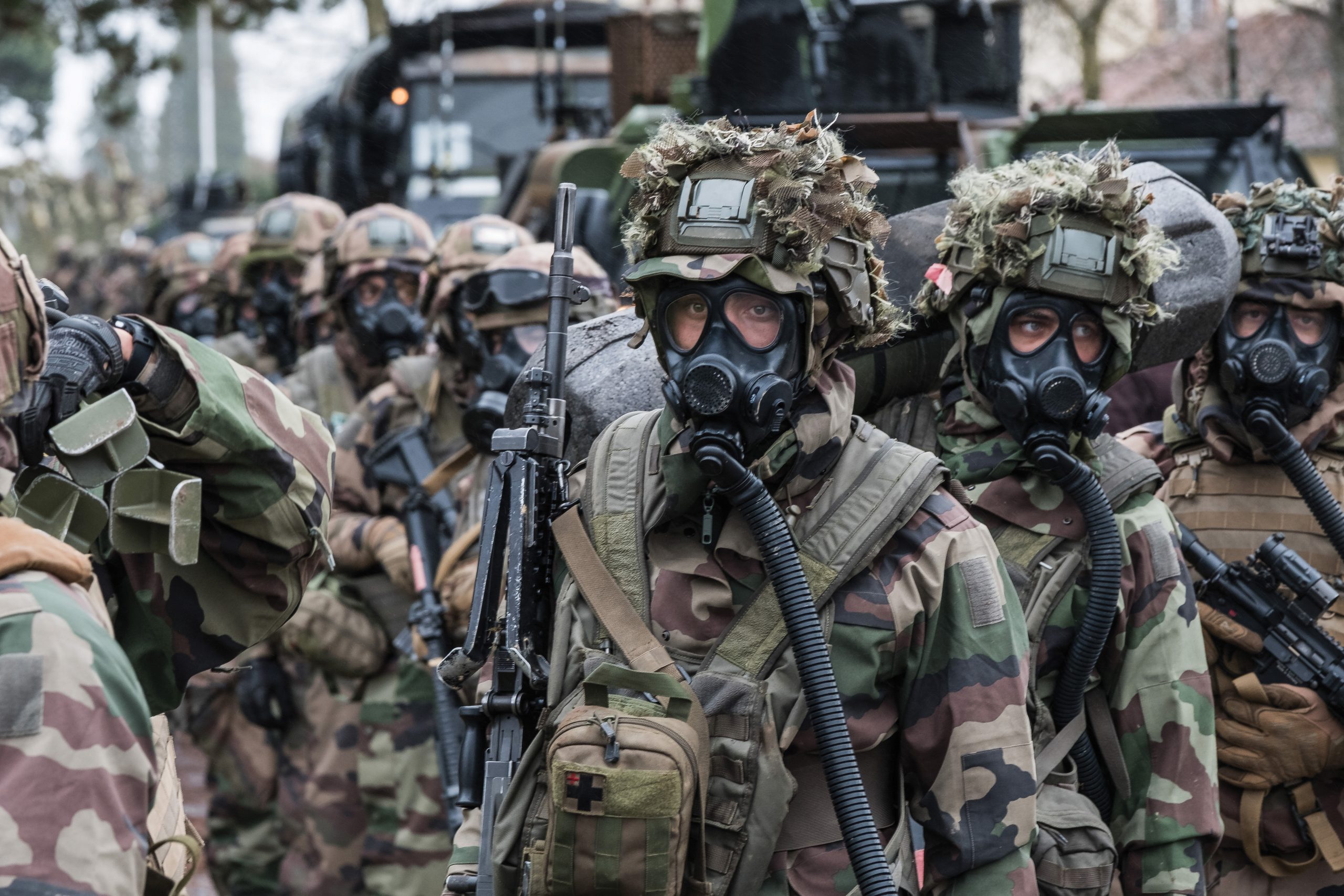
2 CBRN Tactics: One of the tasks of the US Chemical Biological Defense Program CBDP is to integrate separate areas of CBRN defense capabilities like sensors, information systems, protection systems, consequence management tools to deal with hazardous situations together toward one system that enables rapid decision-making at a strategic, tactical and unit level. As a vision for the countermeasures of the future the US military also sees an integrated protective ensemble based on the convergence of nanotechnology, biotechnology, information technology and cognitive sciences. It will sense dangerous substances, initiate countermeasures and provide real-time battlefield awareness to the wearer and to the command nodes.
3 Detection Equipment: The first step to neutralizing a danger is understanding it, and consequently, the methods of hazardous materials detection can be effective, durable and accurate. Thus, detection teams can confident that they receive the correct readings to inform their next move. In addition to reliability, many devices are made to withstand extreme conditions—such as intensely cold or hot climates—to guarantee they can be used wherever their services are needed. The protective gear of users has also to take into account in the devices’ interface design to make use easy even when wearing bulky gloves.
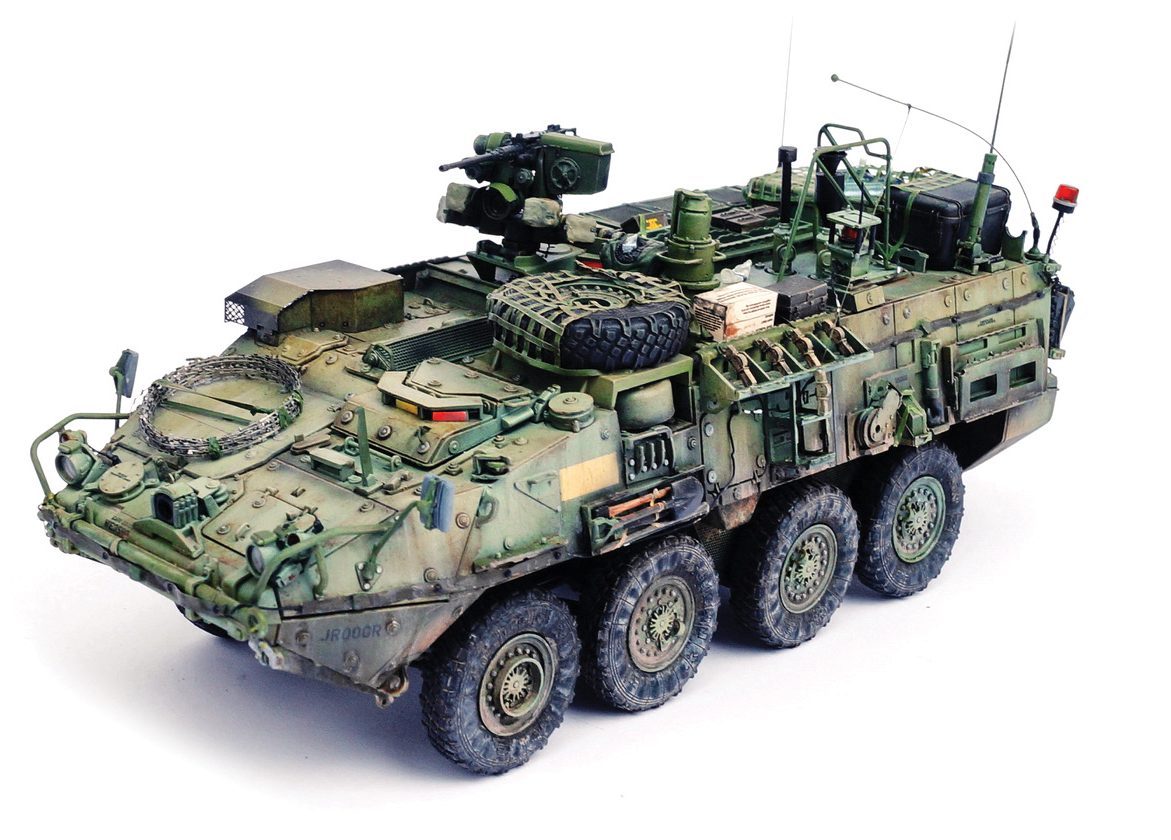 Besides, researchers have developed bioaerosol early warning devices, that can detect various airborne
Besides, researchers have developed bioaerosol early warning devices, that can detect various airborne
biological contaminants. Laboratory testing has shown that such sensors can signal the presence of aerosols and bioaerosols (e.g., household dust, bacteria, smoke, and some viruses) ranging from 0.15 microns to more than 5 microns (adjustable based on application) in real time. A simple design enables these detectors to be used individually or to be networked in distributed arrays that will enable continuous, real-time monitoring of critical areas for the presence of airborne contaminants. Some of the sophisticated sensors detect airborne biological contaminants through an innovative design that uses a laser and patented technique to easily differentiate between inorganic and organic particles. When illuminated by a laser, bioaerosols that contain bacteria, viruses, or fungal spores emit photons with a characteristic fluorescence signal. Inorganic particles simply scatter the laser light without emitting fluorescent photons. As air passes through the laser inside the detector, fluoresced and scattered photons are collected and counted separately to distinguish bioaerosols—even in the presence of potentially interfering dust and other inorganic particles.
4 NBCRV Stryker: The M1135 Nuclear, Biological, Chemical, Reconnaissance Vehicle (NBCRV) provides detection and surveillance services for battlefield hazard visualization. Soldiers have used the Stryker, an eight-wheeled armored fighting vehicle, to address CBRN threats on the battlefield. When modified with CBRN chemical detection sensors, the Stryker is now known as the Stryker Nuclear, Biological and Chemical Reconnaissance Vehicle or NBCRV. Moreover, the NBCRVs are undergoing development process to upgrade the sensor suite so as to be turned into a standalone package allowing the sensors package to be placed anywhere. The new modifications will increase Soldier safety, as the package will perform remote detection tasks, side by side with the capability of on-the-move detection.
5 Respiratory protection: CBRN respiratory gear is vital to guard responders from airborne toxins and chemical agents. Individuals tasked with rescue in disaster areas may also need respiratory protection from dust and other debris particles, as exposure to such contaminants can lead to long-term health complications. Available respiratory filtration systems are built to be lightweight in order to minimize mobility interference.
6 Personal Protective Equipment: Proper Personal Protective Equipment (PPE) has to ensure safety against potential contamination and bodily harm. It is a must that highest quality PPE made with certified materials be obtained. Furthermore, PPE has to ensure maximum mobility and to insulate wearers from harm without inhibiting their ability to complete the mission.
7 Hi-Tech Uniform: A team of researchers at the University of Massachusetts Lowell Center for Advanced Material has developed a new multifunctional material made by treating a commercially available nylon-cotton blend with non-toxic chemicals, to provide army uniforms that are not only fire retardant but also insect repellent. Military uniforms have come a long way from the days when their main function was to identify which side a soldier was on while intimidating the enemy. In the old days, uniforms may have been impressive and colorful, but they were also uncomfortable, hard to clean and maintain, and not very practical for either combat or everyday duties. Today, uniforms are becoming increasingly high-tech, with digital camouflage, protection against biological and chemical agents, blast protection, and even self-heating gloves.
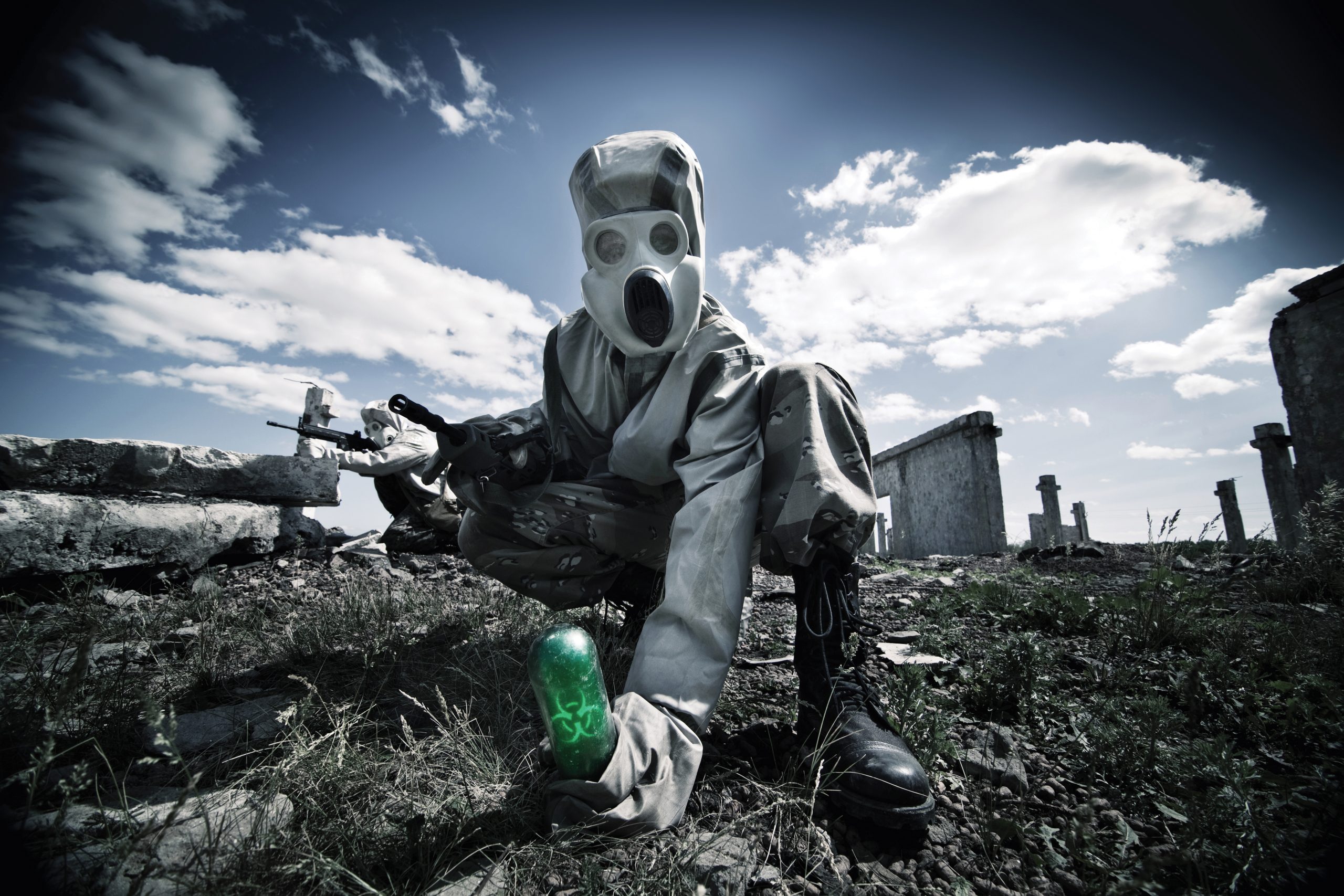
10. Role of Armed Forces
First and foremost, the military ought to maintain the health of its service members through a COVID-19-inspired operational plan for screening and quarantine. This plan would facilitate prompt and sustained emergency responses and combat operations, including key missions like strategic nuclear deterrent patrols. Domestically, the military will need to assist in civil support, law enforcement, border patrol, and the defense of critical infrastructure. Internationally, the defense ministries will serve as a logistics powerhouse. Locally, the armed forces have the manpower and experience to aid in a variety of national security sectors. In addition to the national guard forces can conduct drive-through testing, delivered water to vulnerable populations, and carry out law enforcement orders for curfews and quarantines. For critical national infrastructure, the military will serve as first responders to newfound issues with electrical generation, water purification, sanitation, and information technology. Abroad, the military could benefit from military-to-military planning and exercises for the Air Force to be ready for coordinating logistical efforts to move overseas medical supplies. The armies should draw lessons learned from past international pandemic responses. The cholera outbreak among half a million Haitians following a 2010 earthquake demonstrated that the armed forces could work with international military counterparts to regenerate critical infrastructure in other countries. The Ebola outbreak in West Africa in 2014 extended that cooperation to nongovernmental organizations like the Red Cross, Doctors Without Borders, and Project Hope. Successful military cooperation abroad will fulfill basic international needs and build trust for peaceful scientific cooperation, shifting the focus to future questions like whether the bioweapon is mutating, how environmental factors affect its spread, if infected people develop short- or long-term immunity, and which mitigation efforts are effective. Successful in-situ defense will fill interdisciplinary gaps in deterrence and disruption while a layered “3D” approach will determine how well the world fares during the most dangerous pandemic yet. In conclusion, George Orwell once said, “Life is a race between education and catastrophe”. Further, Gene Kranz said, “Failure is not an option”.
Sources and references
Milan Vegi, On Military Creativity, Joint Forces Quarterly, 70, 3rd quarter 2013, p. 83.
Michael Mcnerney (2005) Military innovation during war: Paradox or paradigm?, Defense & Security Analysis, 21:2, p. 202.
Ibid., p. 202.
Michael C. Horowitz, What Is A Military Innovation and Why It Matters, October 9, 2020, https://bit.ly/39IA1I6
Daniel M. Gerstein, The Military’s Search for Innovation, The Rand Blog, August 13, 2018, https://bit.ly/2QRWnAh
Nina Kollars, Genius and Mastery in Military Innovation, Survival, 59: 2, 2017, p. 125.
Milan Vegi, op.cit., p. 88.
Michael Mcnerney, op.cit., p. 205.
Tor Bukkvoll, (2015) Military Innovation Under Authoritarian Government – the Case of Russian Special Operations Forces, Journal of Strategic Studies, 38:5, pp. 614 – 615.
George M. Dougherty, Accelerating Military Innovation Lessons from China and Israel, Joint Forces Quarterly, 98, 3rd Quarter, 2020, pp. 10 – 11.
Barry Scott, Naluahi Kaahaaina and Christopher Stock, Innovation in the Military, Small Wars Journal, October 2, 2019, https://bit.ly/3rGTGOE
Milan Vegi, op.cit., pp. 87 – 88.
Anthony Cordesman, The Real Revolution in Military Affairs, CSIS, August 5, 2014, https://bit.ly/3cRZWzc
Elsa B Kania (2019) Chinese Military Innovation in the AI Revolution, The RUSI Journal, 164:5-6, 26-34, pp. 28 – 29.
Wendy Rejan, Radar, in; Jon T. Hoffman (ed.), A History of INNOVATION U.S. Army Adaptation in War and Peace, (Washington; CENTER OF MILITARY HISTORY, 2009), pp. 17 – 18.
Ibid., pp. 20 – 23.
US Army demonstrates autonomous resupply with UAVs at recent AEWE, Jane’s International Defence Review, April 2021.
Prox Dynamics, https://bit.ly/39FeSP9


